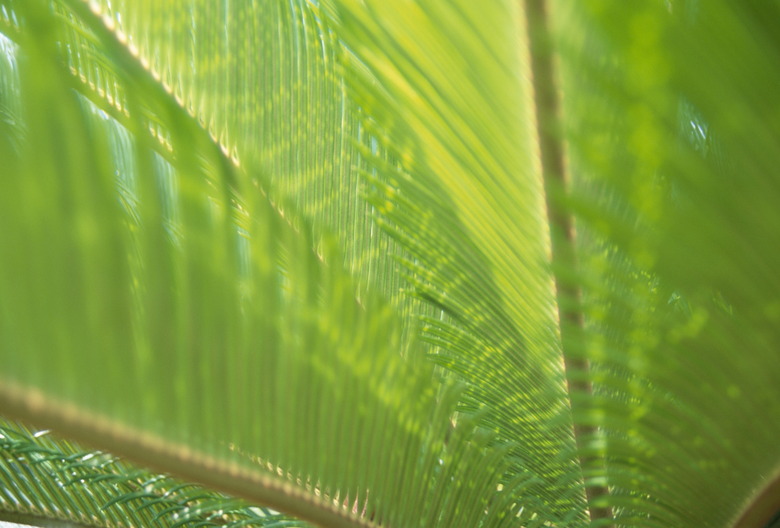How To Transplant A Sago Palm
Time travel back 150 million years to the Mesozoic era and you'll wander about in a world populated by members of the the Cycadaceae family, including sago palm (Cycas revoluta). These tropical cycads are living fossils of a different age and grow in U.S. Department of Agriculture plant hardiness zones 8 through 10. If you need to transplant a backyard sago, keep in mind that the larger the plant, the more time and effort it will take.
A Palm By Any Other Name
A Palm By Any Other Name
The slow-growing sago reaches its maximum height of 12 feet over the course of 50 years. Its leaves grow 6 feet long, supported by rigid midribs. In spring, new green leaves appear around the trunk perimeter, starting as green spikes. Once they grow to their full length, they uncoil gently from the midrib to form a new rosette. If you see new rosettes forming, it is not the time to transplant. Never dig up a sago when the plant is growing new leaves. It is best to transplant in spring when warmer weather is just around the corner.
- Time travel back 150 million years to the Mesozoic era and you'll wander about in a world populated by members of the the Cycadaceae family, including sago palm (Cycas revoluta).
- If you need to transplant a backyard sago, keep in mind that the larger the plant, the more time and effort it will take.
Location, Location, Location
Location, Location, Location
Pick a new home for your sago well before you move it. Consider the plant's mature size when choosing a new spot: Sago palms spread 6 feet wide, but they grow slowly and will be outstripped by aggressive neighboring plants unless you provide adequate space. Don't plant them too near walkways or structures. The site should provide some shade, as partial shade encourages sago palm leaves to grow larger and brighter. Choose a spot with rich, well-drained soil.
Moving Day Haircut
Moving Day Haircut
Sago leaves grow in sequential rings or rosettes. When you get ready to transplant a sago, snip off all leaves but the top rosette, making the cuts with garden pruners wiped with a rag soaked in denatured alcohol. Sagos lose water through their leaves, and removing them minimizes water loss while the plant is adjusting to the move. Alternatively, tie the leaves close to the trunk with twine.
- Pick a new home for your sago well before you move it.
- Consider the plant's mature size when choosing a new spot: Sago palms spread 6 feet wide, but they grow slowly and will be outstripped by aggressive neighboring plants unless you provide adequate space.
Time to Dig In
Time to Dig In
Dig a trench around the sago about 12 inches from the outer edge of the trunk, keeping the root ball intact. The roots are likely to be twice as long as they are wide, so expect to dig deep. Sago palms are heavy, so you may need to call in an expert to do the deed. At the least, enlist some strong arms to help you lift the plant out and place it in its new hole. Use a wheelbarrow to move it more easily. It is critical to replant the sago even with the soil level. The root initiation zone is the area at the bottom of the trunk and the tree will suffocate and risk root rot problems unless that area remains above ground level.
- Dig a trench around the sago about 12 inches from the outer edge of the trunk, keeping the root ball intact.
- The root initiation zone is the area at the bottom of the trunk and the tree will suffocate and risk root rot problems unless that area remains above ground level.
Finishing Touches
Finishing Touches
Don't forget to mulch. After you have refilled the planting hole, apply a 3-inch layer of organic mulch over the root area of the sago palm, keeping it from touching the trunk. Water the root area thoroughly when you have finished. After that, water to keep the root ball evenly moist for the first eight months in the new spot.
Sago Pups
Sago Pups
While you are digging up the sago palm, look around the base of its trunk for suckering offsets, called "pups." You can make new plants by cutting them off carefully with a sterilized hand trowel. Remove their leaves and plant the pups in the same way as the mother plant, in well-drained soil in partial shade.
- After you have refilled the planting hole, apply a 3-inch layer of organic mulch over the root area of the sago palm, keeping it from touching the trunk.
